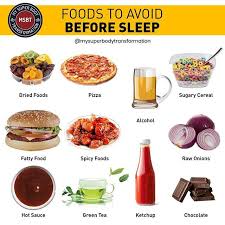
During a flare-up of colitis, it can be hard to digest many types of food, which makes it important to find foods to eat with colitis. People with ulcerative colitis might want to reduce their consumption of potatoes because they contain high levels of glycoalkaloids. These substances cause gas and bloating and may even worsen the symptoms of the disease. The symptoms can be exacerbated by eating fried potato chips, skins, and other foods high in sulfur. Eating foods rich in sulfur can be detrimental to your health. It can cause gastric problems, cramping, and diarrhea. Experts recommend limiting sulfites in your diet as well as avoiding processed foods.
Avoid spicy foods if you're trying to avoid them. These foods contain capsaicin. This can cause irritation to the intestinal lining and flare up symptoms. This can also cause colon damage that can make it difficult for patients to maintain remission. A low-FODMAP diet may be an option if ground flaxseeds are not a problem. These diets aren't for everyone. Talk to your doctor before beginning a low FODMAP regimen. To make sure it is right for you, consult your R.D.
Low-fiber diets are best for those suffering from colitis. Remission is possible by eating foods high in fiber. Bananas are a good choice for those with lupus. Talk to your doctor about an elimination diet if you're not sure what to eat when colitis flares up. The goal is to identify the foods that trigger your colitis symptoms.

While it's not recommended to avoid foods that contain soluble and insoluble fiber, a good IBD diet will incorporate standard recommendations for a healthy diet. You should also consider the specific nature of colitis. You may experience diarrhea and other symptoms if you eat too many pasta or bread. These foods can cause a flare-up so it is better to avoid them or focus on easy-to-digest foods.
While limiting dairy products and wheat is helpful in easing your colitis symptoms, cutting out certain food groups completely is not a good idea. Instead, focus on reducing your food intake. You can also incorporate a gluten free diet into your daily diet. Gluten-free diets should not be eaten. If you are suffering from a colitis flare up, you should also consider limiting foods that contain high amounts of fiber.
Because people with UC may not have the ability to digest lactose properly, it is important that you limit your intake of dairy products. It's vital to remain hydrated during flare ups. While limiting dairy products, you can still consume Greek yogurt, which contains probiotics and is low in lactose. Avoid milk because it is high-saturated fats.
It is possible to stick to a diet rich with fruits and vegetables. If you have UC, these are not recommended. They can cause inflammation and irritability in the gut. They can also help to reduce symptoms of UC. These foods should be avoided if colitis flares up. If you're having diarrhea, avoid consuming raw vegetables or eggs. Avoid eating raw vegetables or eggs if you have colitis.

You can also enjoy salmon. Salmon oil can help to reduce inflammation. It is also a good source of protein. Omega-3 fatty acids are also found in other fish, such as tuna. The best way to prepare fish is to make sure it retains its nutritional value. You should also increase your intake calories and proteins while you eat fish. This will help you avoid colitis flare ups in the future and improve your health.
Also, reduce the fiber content of your diet. Many sources of fiber are rich in folate and magnesium. These foods are best for people suffering from ulcerative colitis. Foods high in fiber should be avoided as they can trigger symptoms. Avoid processed foods and products made with enriched white flour. They could lead to an increase in the risk of developing the disease. You should avoid them if you wish to receive the most effective relief.
FAQ
What should my weight be for my age and height? BMI calculator & chart
Use a BMI calculator to determine how much weight is needed to lose. A healthy BMI range should be between 18.5 and 24,000. Weight loss is possible if you aim to lose approximately 10 pounds per week. Simply enter your height, weight and desired BMI into the BMI calculator to calculate it.
Check out this BMI chart to determine if you are overweight or obese.
Which lifestyle is best for your health?
Healthy lifestyles include eating healthy food, regular exercise, good sleep, and avoiding stress. These guidelines will help you live a long, healthy life.
Small changes to your diet or exercise routine can help you start losing weight. For example, if you want to lose weight, try walking for 30 minutes every day. You can also take up dancing or swimming if you are looking to be more active. You could also sign up to an online fitness platform like Strava, which tracks your activity.
How do I know what's good for me?
Listen to your body. Your body will tell you how much exercise, nutrition, and sleep you need. You need to be aware of your body and not overdo it. You must listen to your body to ensure you are healthy.
Statistics
- In both adults and children, the intake of free sugars should be reduced to less than 10% of total energy intake. (who.int)
- Extra virgin olive oil may benefit heart health, as people who consume it have a lower risk for dying from heart attacks and strokes according to some evidence (57Trusted Source (healthline.com)
- According to the 2020 Dietary Guidelines for Americans, a balanced diet high in fruits and vegetables, lean protein, low-fat dairy and whole grains is needed for optimal energy. (mayoclinichealthsystem.org)
- The Dietary Guidelines for Americans recommend keeping added sugar intake below 10% of your daily calorie intake, while the World Health Organization recommends slashing added sugars to 5% or less of your daily calories for optimal health (59Trusted (healthline.com)
External Links
How To
What does the word "vitamin" mean?
Vitamins are organic compounds naturally found in food. Vitamins help us absorb nutrients from foods we eat. Vitamins cannot be made by the body; they must be taken from food.
Two types of vitamins exist: water-soluble vitamin and fat-soluble vitamin. Water-soluble vitamins dissolve in water easily. Examples include vitamin C,B1 (thiamine), B2 (riboflavin), B3 (niacin), B6 (pyridoxine), folic acid, biotin, pantothenic acid, and choline. The liver and fat soluble vitamins are stored within the liver and in fatty tissue. Some examples include vitamin D and E, K, A and beta carotene.
Vitamins are classified according to their biological activity. There are eight main groups of vitamins.
-
A – Essential for normal growth, and the maintenance of good health.
-
C is important for nerve function and energy production.
-
D - Essential for healthy teeth and bones.
-
E is necessary for good vision, reproduction.
-
K – Required for healthy nerves & muscles.
-
P - essential for strong bones, teeth and tendons
-
Q – aids digestion of iron and iron absorption
-
R - Required for red blood cell production
The recommended daily allowance (RDA), for vitamins, varies depending upon age, gender, or physical condition. The U.S. Food and Drug Administration has established the RDA values.
For adults over 19, the RDA for vitaminA is 400 micrograms per daily. Pregnant mothers need 600 micrograms per days because it is vital for the development and growth of their baby. Children ages 1-8 require 900 micrograms per day. Babies under one-year old require 700 mg per day. Between 9 and 12 years of age, however, this drops to 500 mg per day.
Children between the ages 1--18 years old who are overweight or obese require 800 micrograms per Day, while those who are overweight or obese need 1000 micrograms. To meet their nutritional needs, children underweight and obese require 1200 micrograms a day.
Children between 4 and 8 years old with anemia will need 2200 micrograms daily of vitamin C.
2000 micrograms daily is required for adults over 50 to maintain their general health. Mothers who are pregnant, nursing, or have a high nutrient need will require 3000 micrograms a day.
1500 micrograms are required daily by adults over 70 because they lose approximately 10% of their muscle each decade.
Women who are pregnant or nursing need more than the RDA. Pregnant mothers need 4000 micrograms per daily during pregnancy and 2500 after giving birth. Breastfeeding mothers need 5000 micrograms per day when breast milk is being produced.